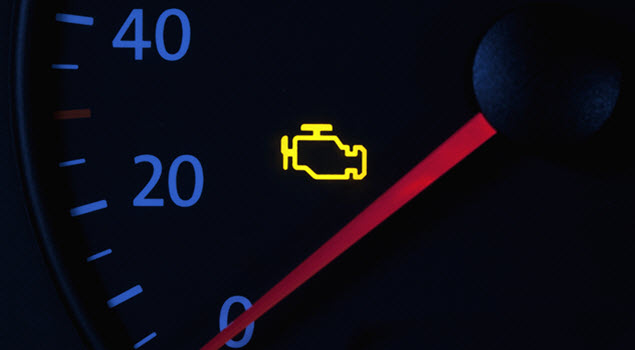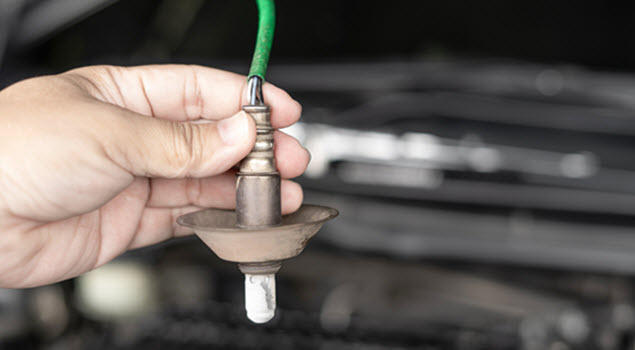One of the most common problems in a Mercedes-Benz is the illumination of the Check Engine Light (CEL). The check engine illumination is an indication you have a problem with your car or SUV’s engine. While it may seem like a minor issue, ignoring the CEL can lead to more serious problems and costly repairs. In this article, we will explore a few causes of Mercedes CEL issues and provide tips on how to prevent them from occurring.
Oxygen Sensor Malfunction
The oxygen sensor (O2 sensor) is a vital component in a vehicle’s emission control system that measures the amount of oxygen in the exhaust gases. If the O2 sensor malfunctions or fails, it can cause the engine control unit (ECU) to receive an incorrect reading and adjust the fuel-to-air ratio improperly. This can cause the engine to run too rich (too much fuel) or too lean (too little fuel), resulting in reduced fuel efficiency, engine misfires, and increased emissions. In addition, the vehicle will trigger the check engine light.
Fuel System Issues
The fuel system is responsible for delivering fuel to the engine, and any problems with this system can cause the check engine light to come on. Common fuel system issues that can trigger the CEL include a malfunctioning fuel pump, clogged fuel filters, a faulty fuel pressure regulator, or damaged fuel injectors. A failing fuel pump can cause a loss of power, rough idling, and stalling. Clogged fuel filters can cause fuel starvation, leading to a lean air-to-fuel ratio and engine misfires. A faulty fuel pressure regulator can cause the fuel pressure to be too high or too low, affecting engine performance and fuel efficiency. Finally, damaged fuel injectors can cause fuel leaks or improper fuel atomization, leading to reduced engine performance and fuel efficiency.
Exhaust Gas Recirculation (EGR) Valve
The EGR valve recirculates some exhaust gases back into the engine to reduce emissions. If the EGR valve becomes clogged with carbon deposits or malfunctions, it can cause the check light to come on. Additionally, a malfunctioning EGR valve can cause the engine to run rough or stall, leading to potential safety issues.
Prevention of Mercedes CEL Issues
Preventing check engine issues in your Mercedes requires regular maintenance and care. Here are some preventive measures you can take to reduce the risk of CEL issues:
- Regular Maintenance: Routine vehicle maintenance is essential for preventing check light issues. Regular oil changes, filter replacements, and tune-ups can help keep your engine running smoothly and reduce the risk of problems that can trigger the CEL.
- Use High-Quality Fuel and Additives: High-quality fuel and fuel additives can help prevent issues with the fuel system, such as clogged fuel injectors or fuel filters. Quality fuel and additives can help keep your fuel system clean and running smoothly.
- Check Engine Light Diagnosis: If your CEL comes on, it must be diagnosed as soon as possible to prevent further damage. Many auto parts stores offer free check engine light diagnosis, and many repair shops can diagnose and repair the issue quickly and efficiently.
- Use the Right Oil: Using the correct oil for your vehicle can help prevent engine problems that can trigger the CEL. Using the wrong or low-quality oil can lead to engine sludge, poor lubrication, and other issues that can cause the check engine light to come on.
Visit Us at Woodinville Sports Cars for CEL Diagnosis
If you are experiencing CEL issues with your Mercedes, you must take preventative measures to keep your vehicle running smoothly. At Woodinville Sports Cars, we can help you maintain and keep your vehicle in top condition. Our team of experienced technicians can diagnose and repair any issues with your Mercedes, ensuring that it is running at its best.
Our mechanic will diagnose the problem by connecting a diagnostic tool to the vehicle’s onboard computer system. This tool reads the vehicle’s Diagnostic Trouble Codes (DTCs), which are specific codes that indicate where the problem is located.
Once the DTCs have been retrieved, our mechanic will then need to interpret them to determine what the issue is. Some DTCs are straightforward and point to a specific problem, such as a faulty oxygen sensor or a loose gas cap. Other codes, however, may require further investigation.
Once the problem has been identified, our mechanic can then advise you of the necessary repairs or maintenance needed to fix the issue and turn off the check engine light. We proudly serve Mercedes drivers from Bothell, Kenmore, Kirkland, Mill Creek, Monroe, Redmond, Snohomish, and Woodinville, WA. We are dedicated to providing high-quality service and customer satisfaction, so book an appointment with us today!





Recent Comments